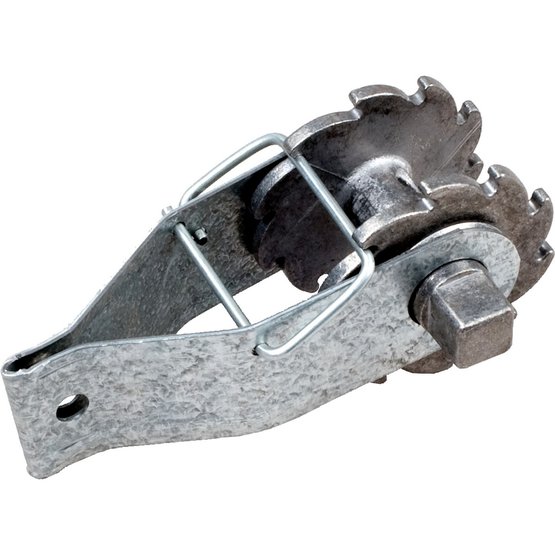One of my first jobs was working in vineyards. The vines grow along wires, and so you wind up interacting with wire a fair bit. This experience became useful later in life when it came time to put up the fence at Mount Mary – but it also gave me some pretty strong opinions about wire strainers.
Wire strainers is a pretty weird topic to have strong opinions on – but it’s a great example of an old simple solution being so irrefutably better than the modern complicated version in every way. That sounds like something a crazy old man would say, BUT HEY WAIT COME BACK-
Anyway, what is a wire strainer? When you run wire over long distances, you will invariably have to re-tension it again at some point. Wire stretches, posts move, and fat people lean on your fence. It’s just a fact of life.
Modern wire strainers look like this –

You incorporate this strainer into your fence, and when you need to re-tension the wire you just use a wrench. You rotate the little square piece, it rotates the wire applying tension, and the ratchet mechanism stops it from slipping backwards. Pretty neat, makes sense, checks out. Cool.
Now this is what old “Dog Bone” wire strainers look like –

They are a lump of metal. They have holes on each end, and a hole to poke the wire through in the middle. You drill a hole in your fence post, run the wire through the hole in the fence post and through the hole in the stainer, and then use a bolt poked through a hole on each end of the strainer to rotate it and apply tension. When you’re done, you leave one of the bolts there to prevent the strainer spinning around and the wire unravelling. No ratchet mechanism to break or wear out, no small moving pieces, no specialist tools.
Big Hunk Of Metal.
Bolt.
Job done.
I love these things. The best ones were made by Walkers (who still make them today, turns out!) but it seems that the design was quite common. The Walkers ones have more holes on each end which gives you better control over the tensioning, while the generic no-name ones I’ve found tend to have just the one hole on each end. The Walkers ones also seem to have a better finish and more consistent moulding, while the generic ones can be a bit slap-dash. You pay a bit more for the Walkers ones.
Because there is effectively nothing to go wrong with them apart from some cosmetic surface rust, the antique ones are just as serviceable as the new ones. You can find them in antique stores, junk shops and at markets and fairs, usually in the “tools and things blokes like” section. Barely anybody has any clue what they are for, and you can usually make off with them for fairly cheap. Often seen is large lots, or mixed in with other “I dunno” stuff.
On eBay, search for “Wire Strainer” with the condition field set to “used”. There’s usually a few on there – the Walkers ones seem to go for $5-$10 a piece while the generic ones are about half that, keeping in mind that shipping big chunks of metal isn’t particularly cheap. You can expect lower prices when you find them for sale physically.